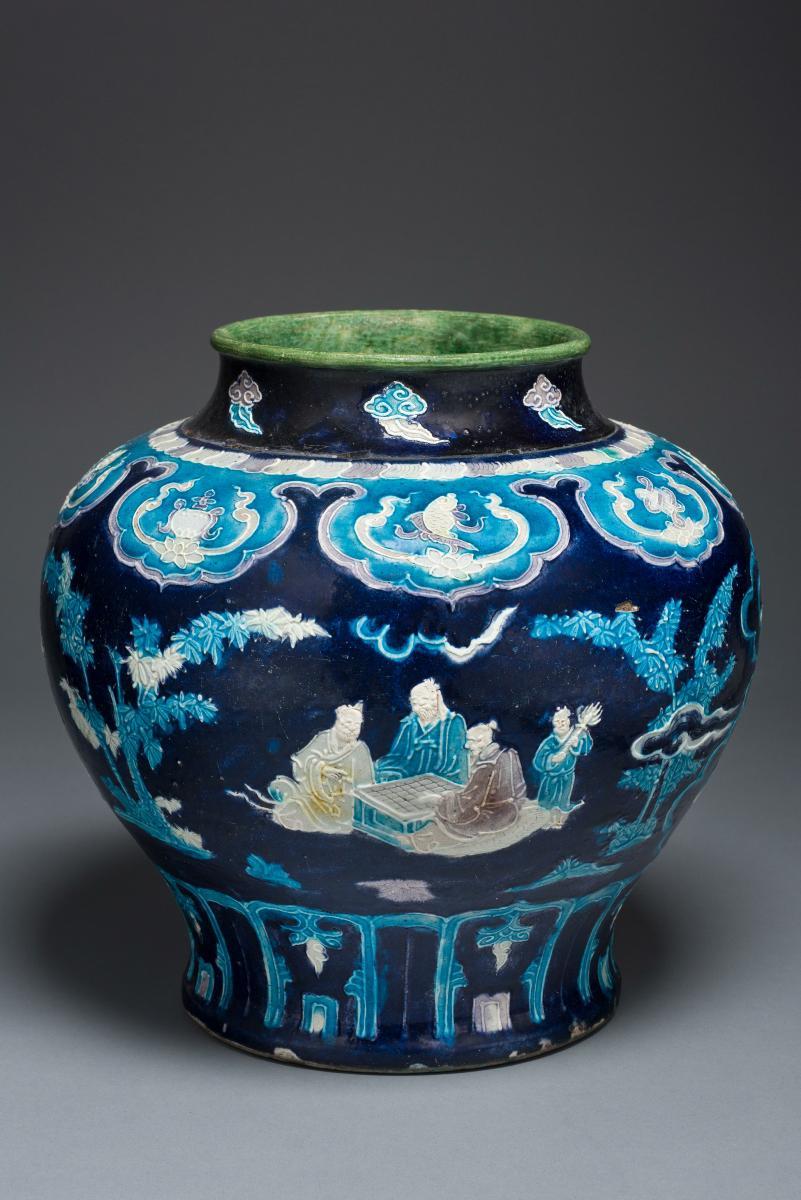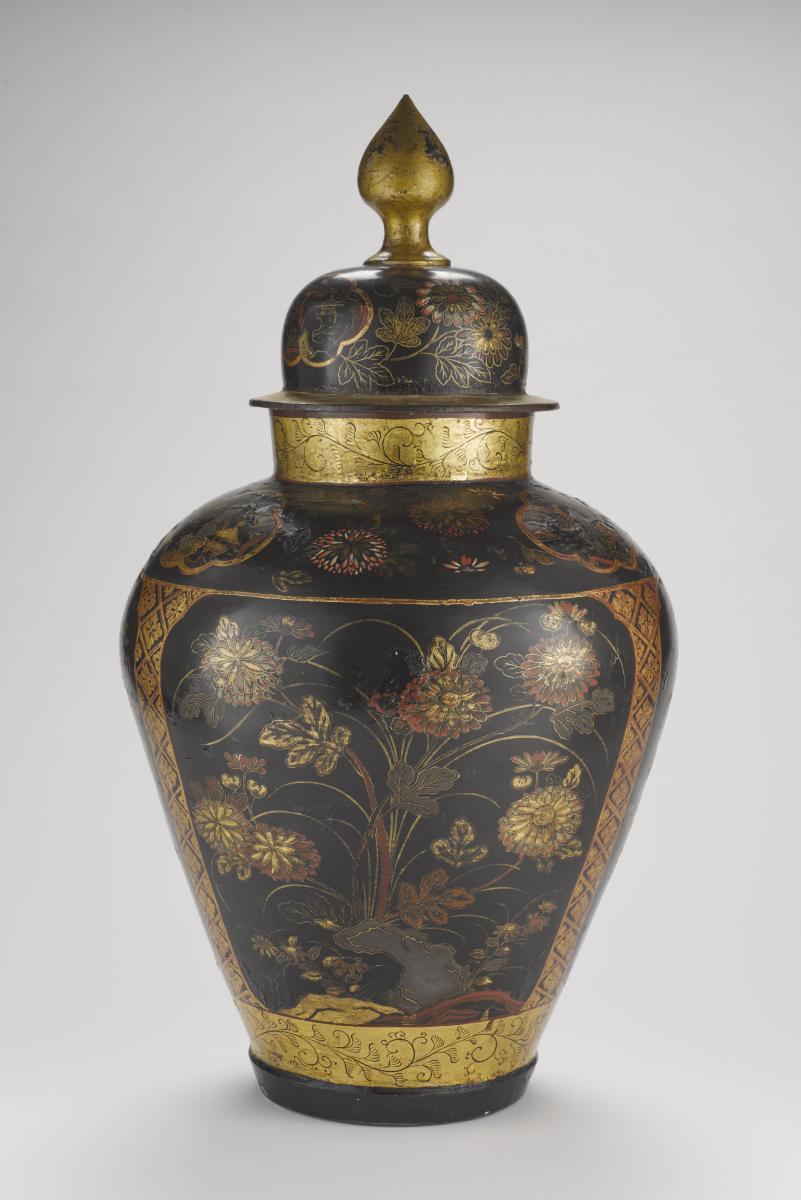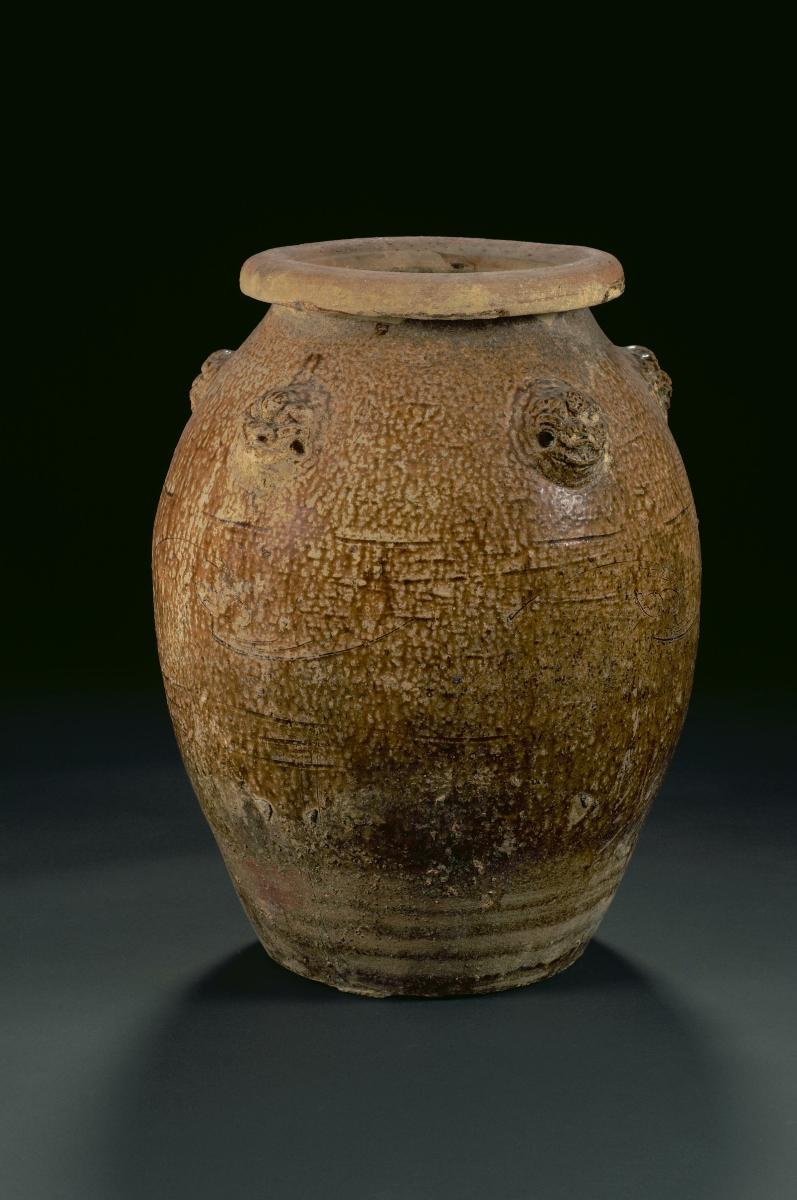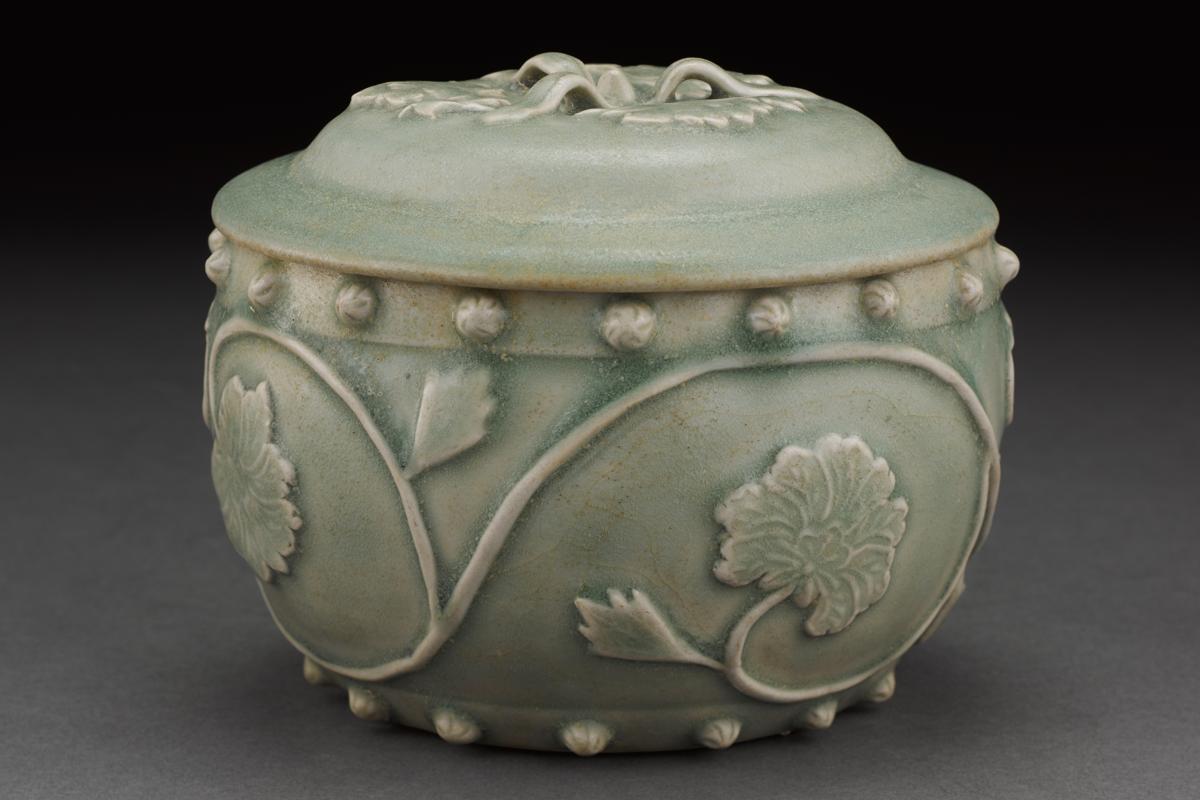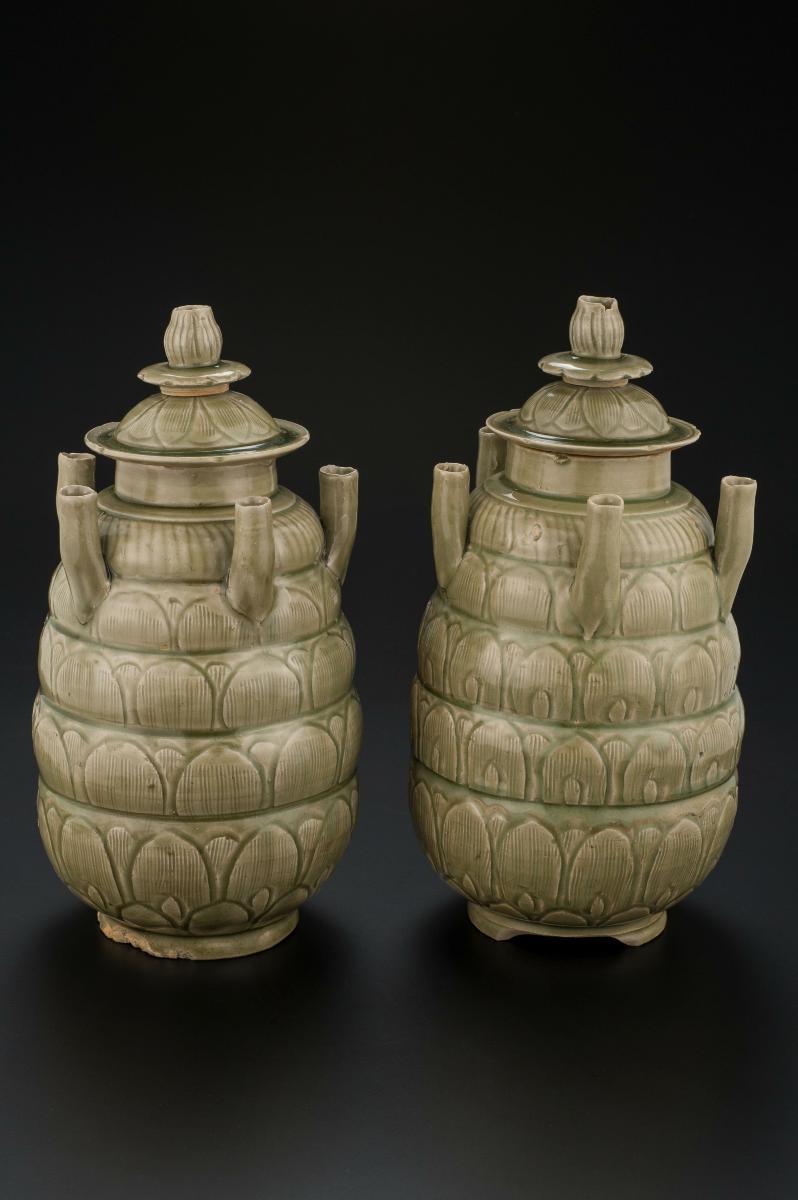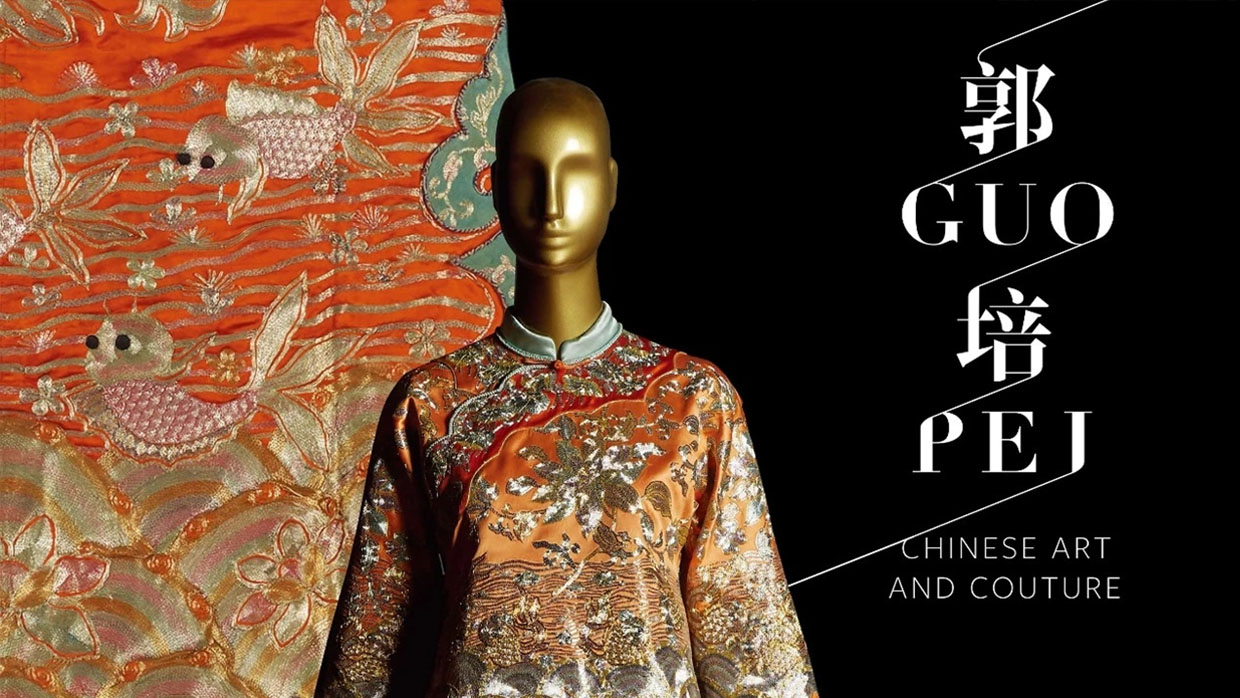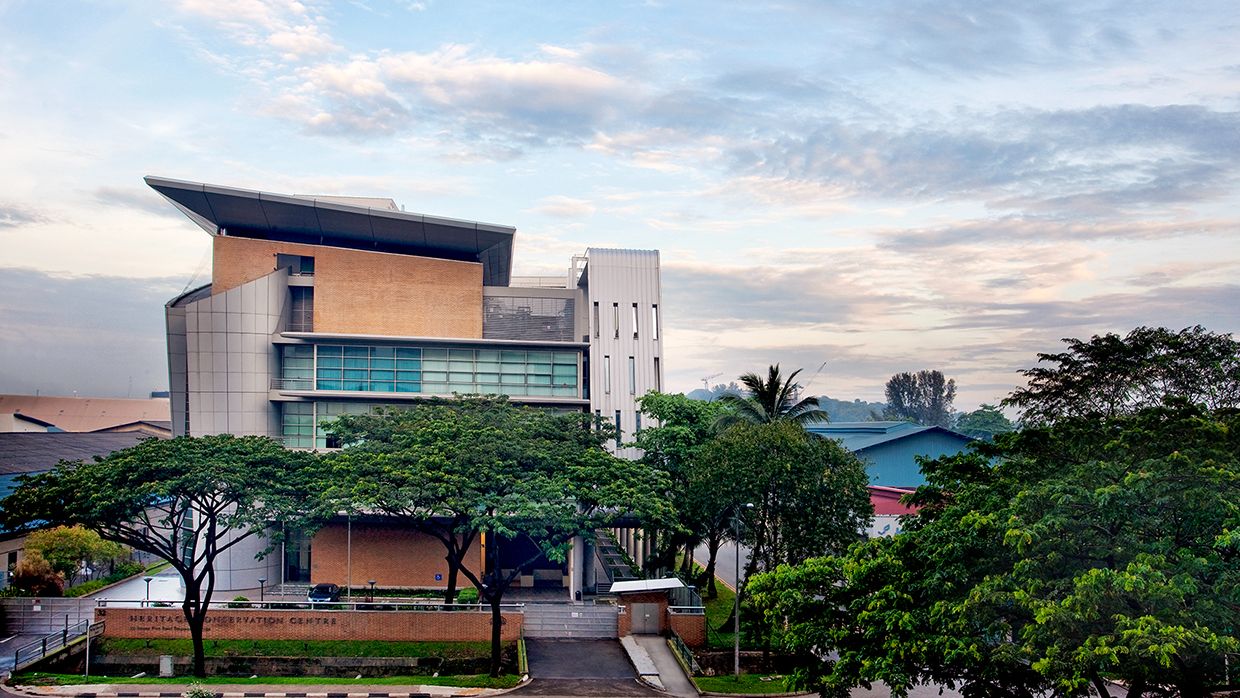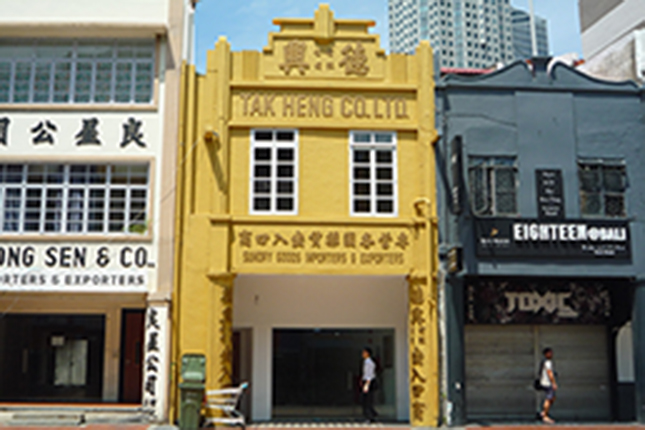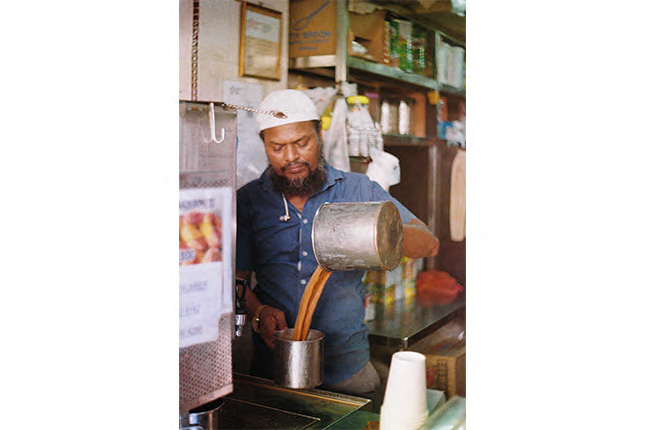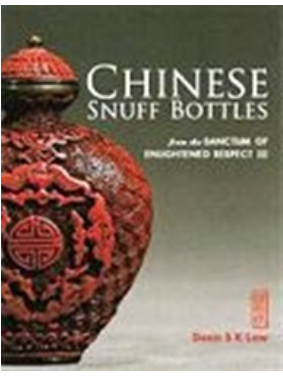This large, ceramic 'fahua' jar of globular form, has a double-bodied container sculpted with carved and relief decoration in polychrome enamels. A row of ruyi-shaped clouds with the 'Eight Buddhist Emblems' such as the 'endless knot', 'fish' and 'the jar' decorate the shoulder with possibly the Eight Immortals depicted in the middle. The term fahua refers to alkaline-glazed earthenwares with striking decorations in deep blue, turquoise, purple, green, yellow and white colours. Produced from the 14th century onwards, fahua glazes became popular in Shanxi province in the north during the mid-15th century and spread to south China, at Jingdezhen. In fahua ware, a technique called slip-trailing is used before the application of the glazes. Designs are outlined by trails of slip (liquid clay) from a tube connected to a bag of slip paste then filled in with yellow, green and purple glazes applied within raised boundaries of background and designs before firing. As a result of these raised outlines, fahua wares have often been thought of as the ceramic version of the Chinese cloisonné.Fahua-type glazes were used to ornament a wide range of vessel types during the middle of the Ming dynasty including garden seats, wine jars, heavy flower pots, vases and jars like this piece.




